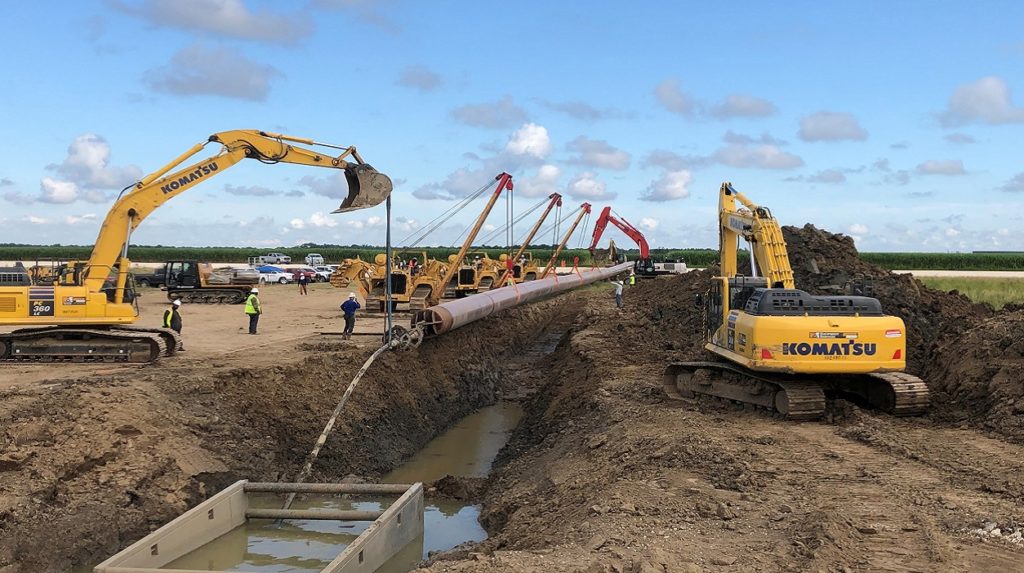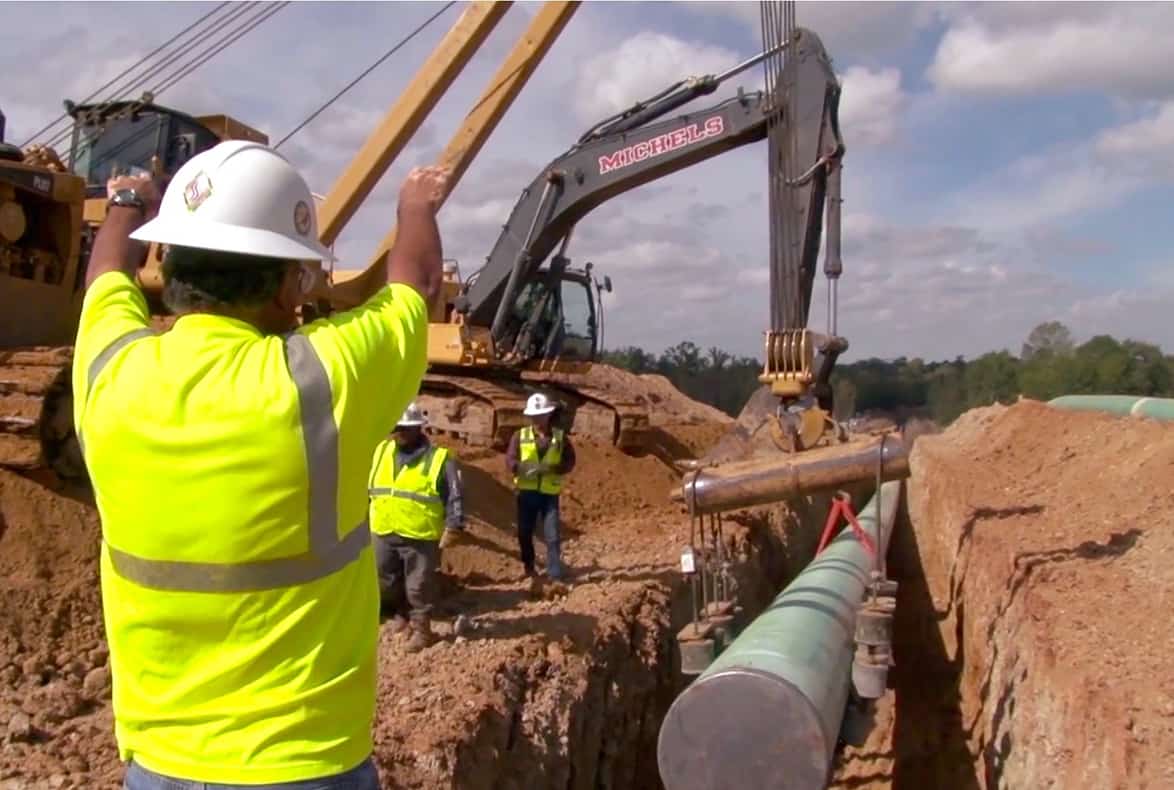The Benefits of Underground Work With Creek Pipe trenching services
Wiki Article
A Deep Dive Into Pipes Installation: Crucial Elements and Considerations for Successful Projects
Efficient pipe installation is an essential facet of design tasks. It involves a series of variables, from material selection to specific sizing and style. Each decision can especially impact the system's performance and durability. Understanding these parts is vital for avoiding expensive mistakes. Creek Pipe trenching services. As groups navigate through the intricacies of installation, a number of key factors to consider arise that warrant focus. What are the critical elements that can make or damage a piping job?Comprehending Pipe Materials and Their Applications
When selecting pipe products, one need to think about the particular applications and ecological problems they will deal with. Different products use distinctive residential or commercial properties that satisfy different needs. For instance, PVC is lightweight and resistant to corrosion, making it optimal for water distribution systems. On the other hand, steel pipelines supply toughness and longevity, ideal for high-pressure applications yet may need protective coatings to stop rust.Copper pipelines are favored for plumbing as a result of their antimicrobial residential or commercial properties and simplicity of installation, while polyethylene is commonly made use of in below ground applications as a result of its versatility and resistance to cracking.The option of material likewise depends upon temperature extremes, chemical exposure, and installation location. For high-temperature applications, products like CPVC or PEX can be useful. Inevitably, recognizing the features and constraints of each product aids in making informed choices that boost system performance and durability.Significance of Proper Sizing and Layout
Correct sizing and style of pipes are crucial for guaranteeing optimal flow rates and reducing pressure loss. These variables additionally play a substantial duty in determining the compatibility of products used in the installation. A systematic method to sizing and style can considerably improve the performance and longevity of a piping system.Influence On Flow Prices
Flow prices in piping systems are critically affected by the sizing and design of the pipelines. Properly sized pipelines guarantee that the liquid can relocate effectively, minimizing disturbance and maximizing flow capacity. Extra-large pipes can bring about decreased flow speeds, while small pipes might restrict flow, causing boosted friction and possible obstructions. The design has to additionally think about aspects such as pipe product, internal surface area smoothness, and design, as these add to the general performance of fluid transport. In addition, the arrangement of installations and connections within the system can impact circulation prices. Meticulous interest to pipe sizing and design is necessary for maximizing circulation performance in any piping installation task.Pressure Loss Considerations

How can pressure loss significantly influence the efficiency of a piping system? Pressure loss is a critical factor that can considerably lessen the efficiency of fluid transport systems. When pipelines are poorly sized or created, excessive stress loss might occur, resulting in decreased circulation rates and increased power usage. This inefficiency can cause greater operational costs and possible system failures. Proper sizing and layout are important to minimize stress loss, guaranteeing that liquid dynamics remain excellent throughout the system. Designers must meticulously think about elements such as pipe diameter, size, and material to attain an efficient equilibrium. Ultimately, resolving pressure loss throughout the design phase can boost reliability and long life, making it important for effective piping jobs.
Product Compatibility Factors
Stress loss is not the only element that can influence the performance of a piping system; product compatibility also plays a considerable role in total efficiency. Making sure that the products utilized in a piping system work with the fluids they will certainly deliver is important. Various materials can respond adversely to different chemicals, resulting in deterioration, degradation, or contamination. This can inevitably compromise the stability of the system and influence its longevity. Furthermore, correct sizing and style are very important to accommodate thermal development and contraction, which can further affect product performance. Examining elements such as temperature level, pressure, and chemical make-up is vital in choosing ideal materials, thereby enhancing system integrity and lowering maintenance costs in the long term.Methods for Accurate Pipe Installation
Precise pipe installation is vital for guaranteeing system efficiency and long life. A number of methods can enhance the accuracy of this process. Careful dimension is essential; installers must use top quality tools such as laser degrees and tape measures to figure out the exact lengths and angles called for. Next, appropriate pipe reducing techniques, like utilizing a pipeline cutter rather than a hacksaw, assurance tidy edges that promote better links. Additionally, the usage of alignment tools, such as pipe jigs, can especially improve precision during setting up. It is likewise advisable to think about thermal development; enabling sufficient spacing and growth joints can protect against future misalignments. Ultimately, the installation group should comply with supplier guidelines to adhere to certain recommendations associated with each pipe type. By executing these methods, the chance of leaks and system failures lowers, ultimately contributing to an extra reputable piping system.Making Certain Pipe Alignment and Support
Appropriate positioning and assistance are essential to the stability and efficiency of any kind of piping system. Imbalance can result in raised tension click this site on joints, possible leaks, and minimized performance. To guarantee correct placement, it is vital to utilize suitable devices such as laser degrees and placement gauges. These instruments assist attain precise positioning, assuring that pipes are installed based on design specifications.Support systems must be developed to accommodate thermal expansion and contraction, along with the weight of the pipes and their materials. Picking the appropriate kind of supports, wall mounts, and braces is imperative. Each need to be set up at defined intervals to avoid drooping or undue stress and anxiety on the pipes. Normal assessments following installation can aid identify any kind of misalignments or signs of poor support. By focusing on positioning and assistance, one can substantially improve the durability and capability of the piping system.Common Installation Errors to Stay Clear Of

Testing and Evaluation for Quality Control
The installation process may show up total, comprehensive screening and assessment are vital to guaranteeing the long-term dependability of a piping system. Various approaches are utilized to evaluate the integrity of the installation, consisting of pressure examinations, visual inspections, and non-destructive screening (NDT) methods. Pressure examinations confirm that the system can endure operational problems without leaks, while aesthetic assessments assist identify any type of visible flaws in the pipes or joints. NDT approaches, such as ultrasonic or radiographic screening, give understandings into the product integrity without jeopardizing the system.Additionally, recording the testing results is essential check this for future referral and compliance with market criteria. This documentation serves not just as a quality assurance procedure yet likewise as a lawful guard. Ultimately, a thorough testing and examination protocol contributes to the total safety and effectiveness of the piping system, guaranteeing it fulfills the required efficiency standards in time.Maintenance Tips for Resilient Pipe Equipments
Keeping a pipe system requires regular evaluations and checking to recognize possible concerns prior to they rise. Implementing reliable cleansing strategies is additionally vital for preventing accumulation that can hinder performance. Together, these practices add to the long life and integrity of the piping framework.Normal Examinations and Surveillance
Normal inspections and surveillance are essential for making certain the longevity and effectiveness of pipe systems. Regular analyses can aid identify prospective problems such as leaks, rust, or blockages prior to they intensify right into significant issues. Carrying out a schedule for regular examinations permits the early discovery of wear and tear, allowing prompt repair work. Surveillance stress levels and flow prices can additionally give beneficial understandings into system performance, guaranteeing that any type of abnormalities are dealt with immediately. In addition, the use of innovative innovations, such as infrared electronic cameras or ultrasonic testing, can enhance the examination process by giving in-depth info regarding pipe conditions. Inevitably, consistent monitoring and evaluations add to the integrity and resilience of pipe systems, lowering the threat of expensive repair services and downtime.
Effective Cleaning Up Techniques
Reliable cleansing strategies are important for maintaining the stability and capability of pipe systems. On a regular basis scheduled maintenance, such as flushing systems with water, aids remove debris and buildup. For more persistent clogs, experts frequently advise hydro jetting, which utilizes high-pressure water to clean pipe interiors completely. Chemical cleansers can additionally be used yet ought to be picked carefully to prevent destructive pipes. In enhancement, utilizing tools like pipe video cameras can assist in identifying trouble areas and ensuring effective cleaning. Keeping correct water drainage and staying clear of the disposal of dangerous materials down pipes even more add to long life. Generally, constant cleaning techniques not just enhance performance yet also decrease the threat of costly repair work in the future.Often Asked Inquiries
What Are the Labor Costs Connected With Pipe Installation Projects?
Labor costs for pipe installation tasks differ commonly, affected by elements like task intricacy, regional wage prices, and called for abilities (Creek Pipe contact). Typically, these prices can vary from $50 to $100 per hour, depending upon the workforce includedJust How Do Neighborhood Rules Affect Pipe Installation Practices?
Local laws significantly influence pipe installation practices by establishing safety requirements, product specifications, and installation methods. Conformity with these policies assurances task safety and security, ecological defense, and adherence to regional codes, eventually impacting overall task success and costs.What Tools Are Essential for Pipe Installation?
Essential tools for pipe installation consist of monkey wrench, heavy equipment cutters, and installations. In addition, sealers, measuring tapes, and levels assure precision and durability. Proper devices promotes performance and adherence to safety and security requirements throughout the installation procedure.How Can Weather Conditions Effect the Installation Refine?
Weather considerably affect the installation procedure, as severe temperature levels, rainfall, or wind can influence product integrity, worker safety, and job timelines. Appropriate preparation and organizing are crucial to mitigate these possible difficulties throughout installation.Exist Warranties for Installed Pipe Systems?
Guarantees for set up pipe systems usually vary by manufacturer and installation professional. Usually, they cover issues and handiwork for a specific duration, ensuring the system's reliability and offering satisfaction to the homeowner.Report this wiki page